by Heather Clegg-Haman
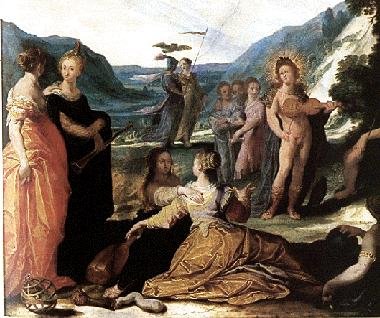
The Muses
The Muses were worshiped widely in the ancient Greek world. The Muses were said to be the inspiration of anything having to do with the arts. These nine goddesses were seated on Mt. Olympus near the throne of Zeus. Each of the nine daughters of Zeus and Mnemosyre (Goddess of Memory) were responsible for one of the many aspects of art.
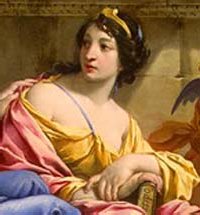
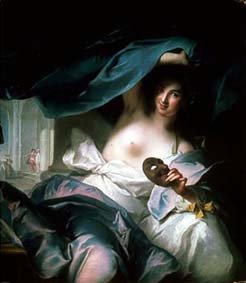
Mneme, the Muse of Memory, and Calliope, the Muse of Epic Poetry.
The oldest and most well known of the nine Muses is Calliope. Her gift to the mortal world was the inspiration of epic poetry. The other eight Muses were equal in responsibility even if they aren't as well known as their sister, Calliope. Clio was the Goddess of History. She transmitted her wisdom of history into the minds of the human race. Euterpe influenced rhythmical poetry with her flute. The fourth Muse, Melpomene, influenced all aspects of calamity. Terpsichore was the Muse of anthem song and dance. Love and poetry, harmonized together with a lyre, was given to the human world by Erato. Polyhymnia was the Muse of divine poetry. Astronomy was the gift given by Urania, and the last Muse Thalia was the Muse of Comedy.

Thalia, the Muse of Comedy
Worshipped on Mt. Helicon in Boetia for many years, the Muses went through a lot of changes. In the beginning there were only three Muses, their names being Aode (the Muse of Song), Mneme (the Muse of Memory), and Melete (the Muse of Meditation). Over time it was decided to increase the Muses to nine. They were given offerings of milk and honey on their holy grounds of Mount Helicon.
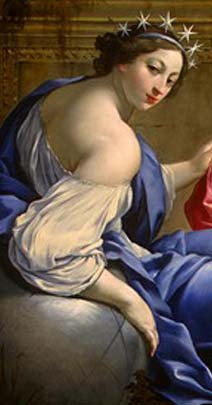
Urania, the Muse of Astronomy
Today, the influence of the Muses are still present. In Astronomy their names are used to label many new discoveries. The word "Museum" originated from the word "Muse," because it is a place where art, history, astronomy is preserved.
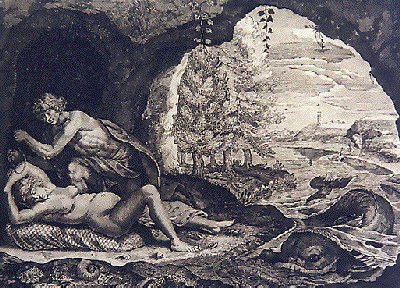
Picture of myth incorporated with the Muses
The Muses are mentioned in a fair amount of myths. For example, Homer opened the Odyssey with the declaration, "Sing in me, Muse…" Socrates reported the insects often referred to as locusts were once men. After the Muses were born, these men were so overcome by the Musus' songs, that couldn't stop singing. This persistent tune kept the men from getting vital nutrients needed to survive. This, in turn, led to death. Knowing that locusts live off constant melody (never stop eating from birth to death), the Muses gave the men the gift of being reincarnated as locusts.
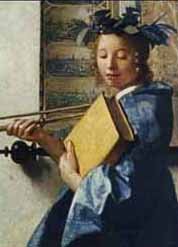
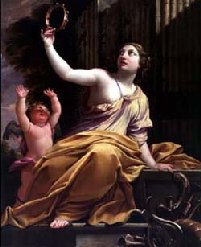
Clio, the Muse of History, and Erato, the Muse of Love and Poetry
All over the world today the muses are mentioned in everyday activities. In fact, this is true for most of the ancient Greek’s mythological characters. For example, brand names like Nike and Atlas come from Greek mythology. Thus the memory of these amazing creatures that may have once roamed the earth are now being incorporated into the future of our world, thanks to the simple inspiration of the nine beautiful Muses.
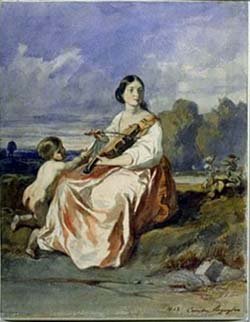
Euterpe influenced rhythmical poetry
Sources:
"Muses," Encarta Learning Zone, Encarta Encyclopedia Deluxe, 4/28/00
Cavendish, Richard. Man, Myth and Magic. New York: Marshall Cavendish Corporation, 1995.
"Muses, Greek Mythology Link." from: brown.edu/~maicar/MUSES.html, 05-11-00
Sherwood, William. Mythology Of All Races. New York: Cooper Square Publishers, Inc., 1944.
"Star's Greek Mythology Muses" from: www.mmmpcc.org/jerrywalkosz/Greek/muses/htm, 05-10-00
"The Muses" from: http://www.cybercomm.net/~grandpa/muse.html, 05-11-00
"The Muses" from: www.eliki.com/portals/fantasy/circle/define.html, 05-11-00
Picture #1 - "The Muses" from: brown.edu/~maicar/MUSES.html
Picture #2 -"Mneme, the Muse of Memory" from: http://www.cybercomm.net/~grandpa/muse.html
Picture #3 - "Calliope, the Muse of Epic Poetry" from: brown.edu/~maicar/MUSES.html
Picture #4 - "Thalia, the Muse of Comedy" from: http://www.cybercomm.net/~grandpa/muse.html
Picture #5 - "Urania, the Muse of Astronomy" from: http://www.cybercomm.net/~grandpa/muse.html
Picture #6 - "Picture of myth incorporated with the Muses" from: http://www.cybercomm.net/~grandpa/muse.html
Picture #7 - "Clio, the Muse of History" from: brown.edu/~maicar/MUSES.html
Picture #8 - "Erato, the Muse of Love and Poetry" from: brown.edu/~maicar/MUSES.html
Picture #9 - "Euterpe influenced rhythmical poetry" from: brown.edu/~maicar/MUSES.html